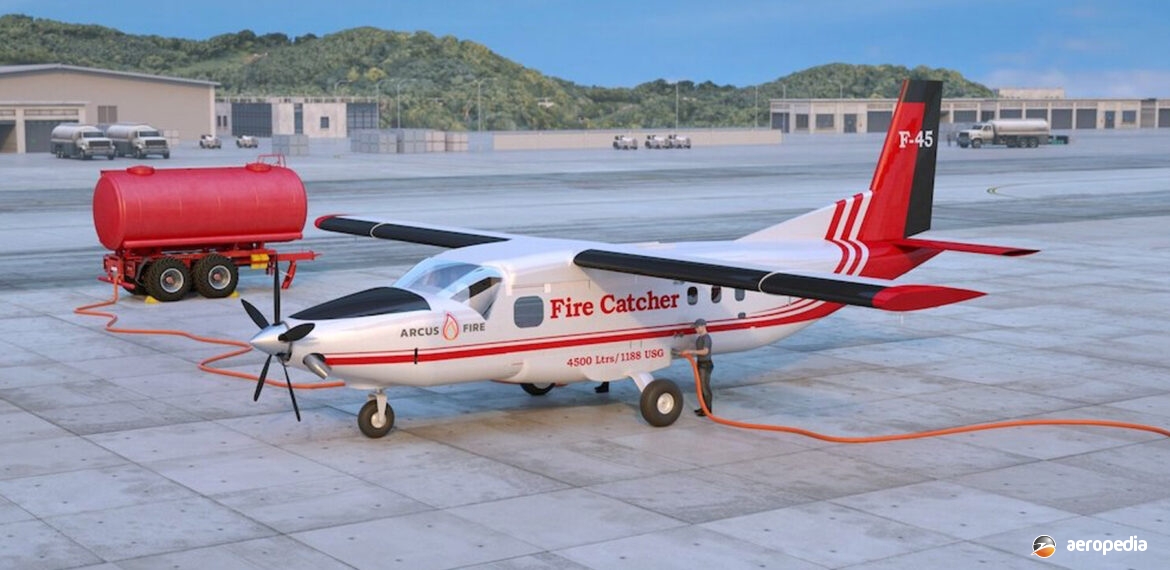Photograph:
An artists impression of a Firecatcher F-45 (Pacific Aerospace)
Country of origin:
New Zealand / United Kingdom
Description:
Fire-bomber / light utility transport
Power Plant:
One Pratt & Whitney Canada PT-65F turboprop
Specifications:
- Cruising speed: 350 km/h (220 mph)
- Range: 1852 km (1,151 miles)
History:
The Firecatcher F-45 is a new single-turboprop designed for aerial fire-fighting and as a light transport for airfreight and passenger carrying, able to carry up to 19 passengers. As an air tanker it is able to load 4,500 litres (999 Imp gals). It is financed by a United Kingdom Company, Arcus Fire and designed by New Zealand firm Flight Structures and built by Pacific Aerospace of Hamilton. Initially first flight was planned for 2023 with the first delivery to a customer to be during 2024. The design has been aimed at replacing the Canadair CL-215 fire bombers and it has been estimated there is a market for 1,000 aircraft over a period to 10 to 15 years.
Larger than the Cessna caravan, the F-45 is one of two models, the F-25 and the F-45. The former is a conversion of the Pacific Aerospace of the Super-Pac XL utility aircraft, Powered by a Pratt & Whitney Canada PT6A-140 engine and can lift up ai 2,498 litres (550 Imp gals). Certification to CAA / CASA /FAA standards was expected to be available during 2021. The F-45 initially was to be placed in the Standard Category with both cargo and passenger variants. The cabin has full stand-up headroom and single-aisle seating. Part of the plan was to make the aircraft available to Government agencies allowing them to take delivery for a years time and only pay for them when they use them, based on minimum utilisation per annum.
The F-45 prototype fuselage was constructed by Flight Constructions and the wings have been built from Pacific Aerospace. It has a flat floor, a cargo door and can accommodate Three LD-Three containers.
Pacific Aerospace was formed from two companies, Air Parts (NZ) Ltd and Aero Engine Services Ltd. The latter imported Fletcher FU-24 agricultural aircraft in kit form during the mid-1950s and began manufacturing a modified variant, known as the PAC Fletcher, in 1965. Aero Engine Services Ltd diversified from maintenance work into taking over production of the Victa Airtourer, a light aircraft it developed into a military trainer, the PAC CT-4 in the early 1970s. The two firms joined in 1973 as New Zealand Aerospace Industries, which became Pacific Aerospace Corporation in 1982.
In 2021 Pacific Aerospace informed the New Zealand Civil Aviztion Authority it was insolvent after it had built some 600 aircraft and was unable to meet its obligations under the Civil Aviation Act, the New Zealand CAA then suspending the Company’s AOC (Air Operation Certificate).

